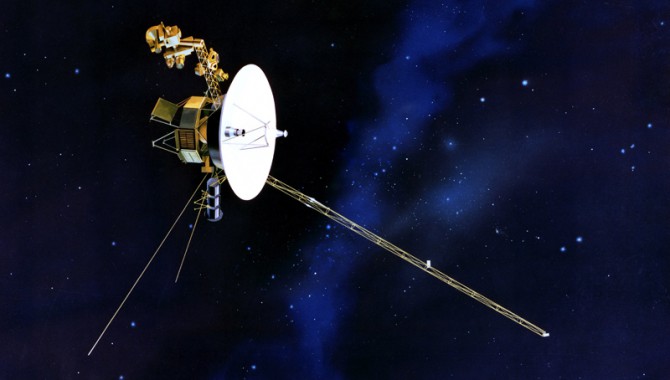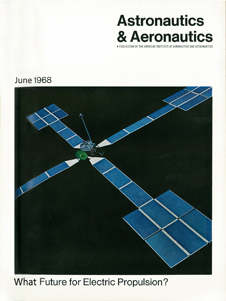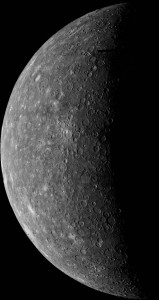
By Ken Randle
When I was working for the Sperry Corporation in the sixties, we submitted a proposal to the Jet Propulsion Laboratory (JPL) to provide support for their unmanned space exploration programs.
Our proposal won and, in July 1966, I took a team of twenty-three engineers to JPL. I had two responsibilities: manage the team and provide the configuration design of spacecraft for the Future Projects Study team.
Exploring the Solar System
The Future Projects Study team, under JPL’s direction, performed four six-month feasibility studies for NASA’s consideration. Two of them became successful missions—a pretty good record. The first study was for a mission to Venus with the release of a capsule to the surface before going on to a flyby of Mercury. This became the Mariner 10 mission, the first mission to use the gravity assist of one planet to reach another planet. This was before powerful computers were available, so the trajectory analysis was very laborious. I worked on the configuration design of the spacecraft, and this work became the basis of my master’s thesis at the University of Utah. I had to coordinate the different disciplines of propulsion and science, figuring out where to place the instruments that would focus on Venus and Mercury, plus planning for backup equipment. NASA accepted the recommendations of the Future Projects Study team’s feasibility study. Mariner 10 was launched on November 3, 1973, and crossed Mercury’s orbit in March 1974. We didn’t know a lot about Mercury then, but we learned fast.
Next, we did a feasibility study of a Venus lander. We enclosed a capsule in balsa wood and carried out a successful landing test in the Mojave Desert, but the Soviet Union launched the Venera 7 spacecraft on August 17, 1970, and landed a capsule on Venus on December 15, 1970, which transmitted data for twenty-three minutes. So NASA gave up on the idea of funding our proposal. The next six-month feasibility study for a project that didn’t happen was a plan to send a solar-electric spacecraft to Jupiter. The challenge was to fold 1,500 square feet of solar panels and package the spacecraft into a Centaur nose cone. We made a one-tenth scale model of the solar-electric spacecraft, and a picture of the model made the cover of the June 1968 issue of Aeronautics and Astronautics magazine, published by the American Institute of Aeronautics and Astronautics (AIAA). It was a worthy project, but it wasn’t funded.
The grand tour missions would require an entirely new kind of spacecraft, a design with capabilities far beyond those of the simple machines that had reached the moon, Venus, and Mars. At the time, Voyager was the most complex unmanned machine ever designed.
The Future Projects Study team’s next feasibility study was for a grand tour of the outer planets, an ambitious idea that became the Voyager mission. Back in the sixties, Gary Flandro, a JPL employee on the study team, discovered that the alignment of the outer planets would make it possible to use a gravity assist from Jupiter to go to Saturn and on to Uranus and Neptune. The launch had to take place between 1976 and 1979 to take advantage of an alignment that occurs only once every 175 years.
For this discovery, Flandro received an award from the British Interplanetary Society. The grand tour missions would require an entirely new kind of spacecraft, a design with capabilities far beyond those of the simple machines that had reached the moon, Venus, and Mars. At the time, Voyager was the most complex unmanned machine ever designed. There had to be a boom for the radioisotope thermoelectric generator, another boom for the magnetometer, a planetary astronomy plasma-wave antenna, high-gain antenna, location for a plasma detector, cosmic-ray detector, low-energy-charged-particle detector, infrared interferometer spectrometer and radiometer, and cameras. Voyager would have to survive the intense radiation at Jupiter and operate almost flawlessly for more than a decade. The new spacecraft would need the decision-making capability to detect and react to a variety of internal problems, since command times from Earth would stretch to hours during the long flight. The reliability challenges were far greater than for any other spacecraft ever designed. We succeeded even better than we expected. In fact, the two Voyager spacecraft are still transmitting data from the outer edge of the solar system today, more than three decades after launch.
Space Exploration Day

Artist’s concept of the Voyager spacecraft with its antenna pointing to Earth.
Photo Credit: NASA/JPL
Artist’s concept of the Voyager spacecraft with its antenna pointing to Earth. Photo Credit: NASA/JPL
To help recognize and celebrate these and other space exploration achievements, for the past thirty-five years I have been working with J. David Baxter, president of the Utah Space Association, to promote Space Exploration Day (July 20) and U.S. Space Observance Week (July 1624), which coincide with the dates of the historic liftoff, landing, and return of Apollo 11 in 1969. Baxter conceived the idea of a celebration on the anniversary of the Apollo 11 mission while he was a junior at East High School in Salt Lake City. In 1972, Flandro and I served as advisors to help Baxter form the Utah Space Association.
Senator Frank E. (Ted) Moss of Utah introduced the Senate Joint Resolution in Congress in 1976. The Space Exploration Day Resolution passed in the Senate as an annual observation, but it was amended in the House of Representatives to apply for only one year. For my efforts in pushing for recognition of the first landing of men on the moon by Apollo 11 and other AIAA activities, I was given the Distinguished Service Award by AIAA in January 1977.

June 1968 cover of Aeronautics and Astronautics magazine showing a one-tenth-scale model of a solar-electric spacecraft that was never funded.
Image Credit: American Institute of Aeronautics and Astronautics
In 1984, Senator E. J. (Jake) Garn of Utah introduced a Senate Joint Resolution for Space Exploration Day to celebrate the fifteenth anniversary of Apollo 11 landing on the moon. It passed both the Senate and House of Representatives unanimously. President Reagan invited all the Apollo astronauts for a reception at the White House. I also received an invitation. It was an exciting opportunity to meet the Apollo 11 astronauts as well as many others. After the reception, we were invited into the East Room of the White House, where President Reagan sat down and signed the Space Exploration Day Proclamation, which I had helped get through Congress. It wasn’t easy, as we had to get the majority of the Senate and the House as cosponsors. The Apollo 11 astronauts and James Beggs (then NASA Administrator) stood behind President Reagan as he signed the proclamation. Then, President Reagan gave a talk on the importance of space commercialization. From 1981 through 1989, I had gotten proclamations or Statements of Support from all fifty governors plus Puerto Rico as a result of many phone calls and letters. Presidential proclamations were obtained starting with President Nixon on the fifth anniversary of Apollo 11 through President Clinton. The power to declare holidays and commemorations now lies with the president. Our goal is for a presidential order that will permanently establish Space Exploration Day as a nonpaid commemorative holiday.
My related efforts over the years have included taking four high school students (including Baxter) to the Apollo 17 launch—the first Apollo night launch. On September 14, 1971, as program chair of the Utah section of AIAA, I organized a dinner meeting to host the Apollo 15 astronauts, their wives, and Dr. James Fletcher (then NASA Administrator). There were 786 people in attendance. In October of 1975, as chair of the Utah Engineers Council, I coordinated a gathering of Apollo and Soyuz astronauts, cosmonauts, and their wives at the Hotel Utah in Salt Lake City. My goal has been and is to increase public understanding of the value of human spaceflight and support for future exploration. The Apollo program was expensive, but it has been estimated that, for every dollar spent on the Apollo program, the nation has received nine dollars in benefits from new technologies.
About the Author
 |
Ken Randle graduated from the University of Michigan with a BS in aeronautical engineering, after which he worked at Douglas Aircraft and then the Sperry Corporation. He spent his first year at the Jet Propulsion Laboratory (JPL) working on the airframe design of the Sergeant Missile System and later helped create a proposal to support JPL’s unmanned space programs. Later, he was the engineering manager of the Shrike Missile System and held various engineering management positions until he retired in December 1986. |








